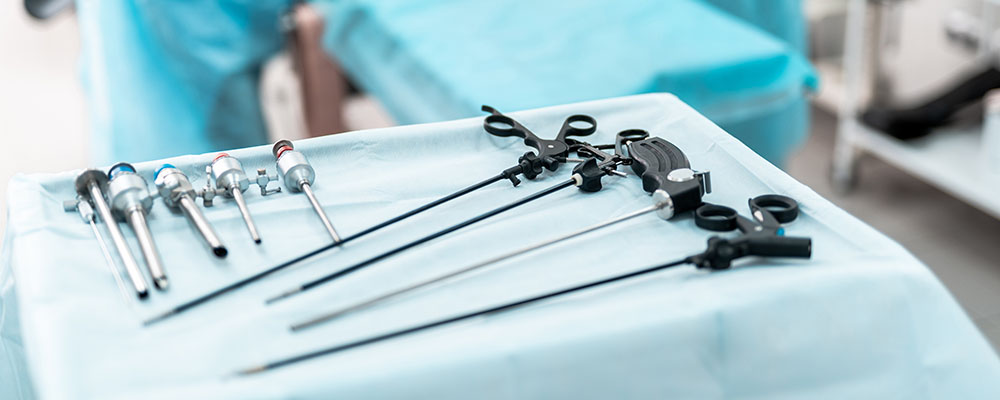
Laparoscopy
A laparoscopy is where a thin tube with a light and a video camera is inserted through a small cut in your abdomen to check the organs inside your belly (or the organs in a woman’s pelvic region). The images can be seen on a computer screen.
This kind of minimally invasive surgery is great because there’s only a small incision made in your belly instead of an entire open surgery—that means it takes less time and you’ll recover faster.
Using this low-risk procedure, we can take small tissue samples, and even remove organs like the appendix or gallbladder.
Why would I need a laparoscopy?
Many surgeries are performed via laparoscopy. Or, when a physical exam, MRI, X-ray, or CT scan can’t determine the issue, a laparoscopy is performed. We use it for checking your belly for issues like tumours and other growths, injuries, cancer, or inexplicable abdominal pain.
Gynaecological laparoscopies are used for women when certain conditions need to be checked, like pelvic pain, ovarian cysts, endometriosis, fibroids, or issues with the fallopian tubes.
Preparing for a laparoscopy
The ConsultationDr Hatchuel will chat with you, explaining the procedure. It’s important to let the doctor know if you have a history of bleeding disorders, or if you’re taking any medication that affects blood clotting. Let him know about any medicine you’re taking, even if it’s vitamins and herbs. Please feel free to ask any questions!
You’ll then be asked about your medical history and go through a physical exam to make sure you’re in good health for the procedure. Please let Dr Hatchuel know if you’re allergic or sensitive to any medicines, anaesthesia, or latex. Blood tests and other diagnostics may also need to be taken.
The ProcedureDon’t eat or drink eight hours before the procedure. You may need to take a laxative before the surgery, or have a solution put into your rectum and lower intestine to clear the way for the camera! You might also be given a sedative to relax you.
What actually happens during a laparoscopy?
- Under general anaesthetic, an IV is inserted into your arm or hand, and a catheter is placed in your bladder to collect urine.
- Dr Hatchuel expertly makes a small incision just below your belly button (only 1 – 2 cm long). Other small cuts may be made to insert other surgical instruments.
- Carbon dioxide is then pumped into your stomach so that it balloons. We do this to make it easier to see inside your belly.
- Then Dr Hatchuel will insert the laparoscope and have a look to see what’s happening in your abdomen. The surgical procedure (if necessary) is then carried out.
- Lastly, we’ll patch you up and leave you to wake from your beauty sleep. We’ll closely monitor your heart rate, breathing, and other vitals to make sure you’re A-Okay.
Depending on the kind of laparoscopy being done, you may need someone to drive you home.
What happens next?
After you wake up from the anaesthetic and you’re home, you’ll need to keep the cut/s clean and dry. You’ll have a follow-up visit to check the wounds and take out stitches.
You might feel pain in your belly and shoulders—don’t worry, this is normal, and you should feel a bit better every day. The pain in your shoulders might seem odd—it’s because the carbon dioxide can irritate your diaphragm, which shares nerves with your shoulder. You can take pain pills if necessary (ones approved by the doctor!).
Avoid physical activity and carbonated drinks for a few days after the operation—the gassy drinks might upset your stomach. To reduce potential blood clots, start light physical activity as soon as you can. Try to sleep more than you usually do, and don’t wear tight clothes.
Dr Hatchuel will then schedule an appointment with you to go over the results.

